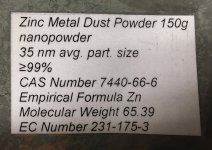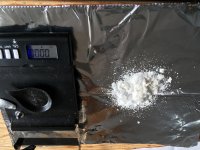DMTripper
John Murdoch IV
I just found some very old MHRB in my freezer and it yields very oily stuff.
I was thinking to boil the bark with acetic acid and throw a bit of elemental zinc powder into the aqueous solution and stir that up for a while before converting to freebase and pulling with hexane.
Shouldn't that give me whiter dryer DMT?
I was thinking to boil the bark with acetic acid and throw a bit of elemental zinc powder into the aqueous solution and stir that up for a while before converting to freebase and pulling with hexane.
Shouldn't that give me whiter dryer DMT?


